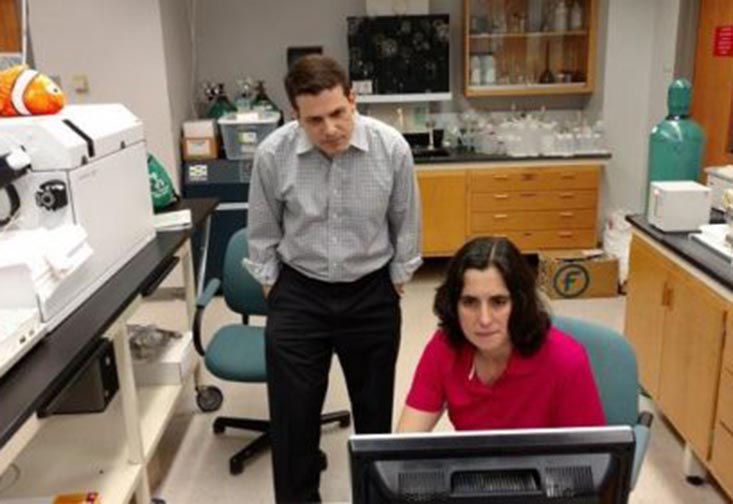In 2016, the city of Flint, Michigan made national headlines as thousands of citizens were exposed to lead poisoning through drinking water. Drinking such water can result in a rash of health problems that impact growth in children and kidney function in adults. This issue and its health consequences got USF St. Petersburg journalism professor Bernardo Motta thinking, how safe is the water here?
“The basic idea was, after seeing what took place in Flint, let’s investigate how safe the drinking water is where we live and use it as a learning experience for students to do both science and reporting around this important issue.”
Motta recruited students from the Neighborhood News Bureau – a working newsroom staffed by USFSP journalism students covering the historic African-American Midtown communities of St. Petersburg – to investigate. He then reached out to middle school students at Academy Prep to help test water for the presence of lead in their homes.
Each student took home vials to collect water with instructions. They each acquired three draws from their faucets to get an accurate assessment of how much lead accumulates in water as it sits in the pipes and to determine lead levels after water has been flushed. Students sent those samples to the USF College of Marine Science for testing.
Before the testing and reporting was underway in St. Petersburg, a colleague of Motta’s from the University of Missouri School of Journalism, Sara Shipley Hiles, heard about this innovative project and asked to be involved. While students here were investigating the issue, conducting interviews and testing drinking water for lead, another group of journalism students were doing a similar process in Columbia, Missouri, with the idea of comparing practices later. The two groups – more than a thousand miles apart – began to share resources and ideas for reporting on drinking water.
Altogether, more than 45 samples were tested throughout St. Petersburg.
“We found lead in all samples, just not a lot and certainly below the EPA levels,” said Motta. “But lead is toxic at any level, especially when you have babies.”
It was common to use lead pipes for interior plumbing for decades until the practice went out of use late in the 20th century. Lead pipes were only banned in 1986. Because these pipes are still in and under homes built in the early part of the 20th century, St. Petersburg and other cities need to regularly test for the toxic substance.
The test findings spurred investigations by USFSP students that resulted in a series of stories focused on the presence of lead and resulting health problems. The series went beyond just water, detailing construction, pipelines, water treatment and EPA testing. Before publishing that series, Motta and the students wanted to put together another investigation, this time focused on solutions.
“We wanted to not just raise awareness about the state of pipes in houses, but to provide information about using things such as filters to reduce intake,” said Andrea Perez, a USFSP master’s journalism student. “There are many options besides pipe repair and replacement to reduce the amount of lead found in water and we wanted to provide those solutions and not just doom and gloom.”
Now as the series on solutions is nearing completion, the project is shifting from reporting to community education.
“We have done a community conversation already with Academy Prep parents and an expert from Hillsborough County,” said Motta. “Once we publish the solutions series, we want to have more talks in the neighborhoods we did the testing and were found to have lead in their drinking water.”
The project also created a model and how-to-guide for journalists and journalism schools in conducting research and reporting on lead and drinking water.
For Perez, she learned a ton from this outside the classroom project, both on the issue of drinking water and being a reporter.
“The topic was incredibly new to me, and because it was so new I really needed to get a great grasp of the subject just to be able to interview people. To get the answers and information to write on the problems and solutions, I needed to ask the right questions.”
Motta and Hiles will highlight this joint project and lessons learned during a session at the upcoming Society for Environmental Journalists (SEJ) Conference. The session will share with hundreds of fellow journalists across the nation what they learned so that others can do their own investigations and work with their own communities on this important issue.
The SEJ Conference this year just so happens to take place in Flint, Michigan.
